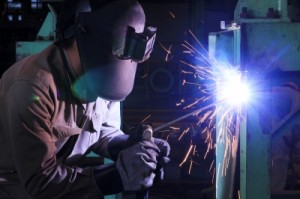The Australian Workforce and Productivity Agency (AWPA) announced the examination of the workforce requirements of the manufacturing sector over the next decade.

In order to encourage discussion, AWPA has released the Manufacturing workforce issues paper.
The examination is focused on the key factors that might affect the workforce over the next decade, such as demographics, opportunities from the Asian century, economic change, technology and human capital.
The paper pinpoints possible strategies for industry, education and training providers and government in order to promote attraction and retention for skilled workers; increase the availability of supply of specialist skills; improve ongoing skills development and promote effective utilization of skills in the workplace.
Manufacturing is said to be the fourth largest employing sector in Australia, with over 921,400 employees, or 8.0% of the total workforce.
The workforce in the manufacturing sector is spread across over 90,000 businesses contributing 7.1% of GDP and 35% of total merchandise exports.
Employment in the sector as a whole has declined by 11.3% over the last 10 years.
Employment in food, beverage and tobacco sectors has experienced the strongest growth over the past decade. Employment in primary metal and metal product manufacturing has also grown.
Medium term employment projections (from November 2012 to November 2017) show a slight increase in employment in the manufacturing sector, with an average annual growth rate of 0.3% over the five-year period.
AWPA has developed a suite of scenarios for Australia to 2025 as a basis for modeling Australia’s workforce needs and developing policy to help meet those needs.
The occupations mostly engaged in transformative processes (technicians and trades workers, and machinery operators and drivers) account for 41% of the workforce.
Key occupations are projected to decline for many of the laborer classified occupations (product assemblers, food and drink factory workers) in the years to 2025.
A high proportion of the workforce is said to be male (65%), aged over 45 years old, and most employment is full-time. The manufacturing workforce has a lower proportion of female workers (25.5%) than the total workforce (45.7%).
Traditionally, skills for many manufacturing aligned occupations have been gained through trade and technical qualifications delivered by the vocational education and training (VET) sector.
50% of workers in the manufacturing industry have LLN skills below required functional level, which places the sector below the national average
The overall employment figures are expected to continue to decline.
The importance of the workforce supporting innovation in the workplace has been highlighted in initial consultations as an important area for the manufacturing workforce now and into the future.
The manufacturing sector has been under pressure from the high dollar, competition from overseas competitors in low-cost economies and slow productivity growth across the economy.
Employment in the industry has also declined at an average annual rate of 1.2% over this time. This trend is projected to continue in the medium and long term.
Global companies in emerging economies are reshaping manufacturing competition through a ‘high-value, low-cost model’, which will impact the future of company models and structures in Australia.
The ability of the economy to grow in the upcoming decade will definitely depend on our ability to raise productivity, develop a deeper understanding of the changes taking place in the Asian region and build successful long-term relationships.




















